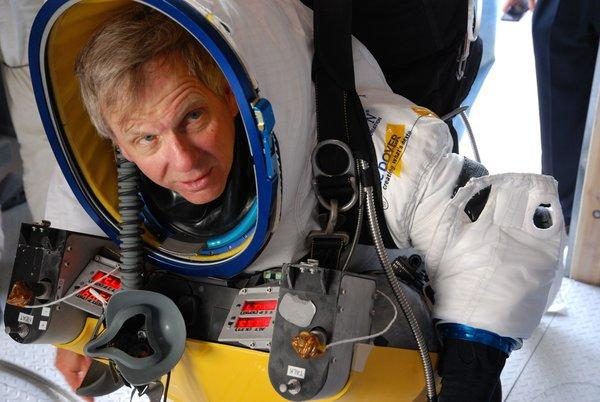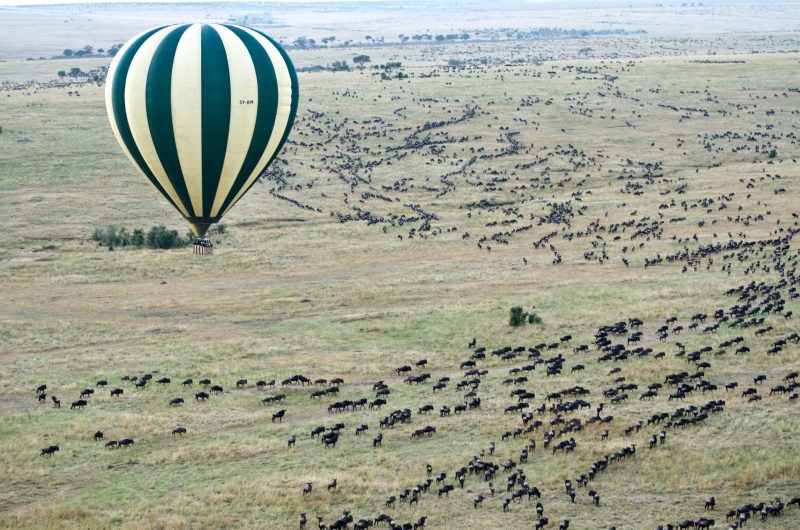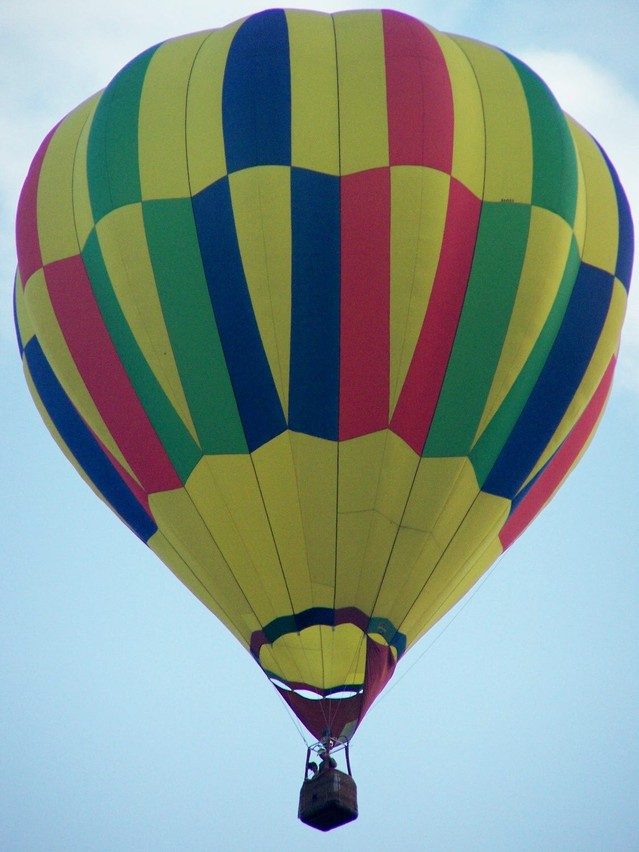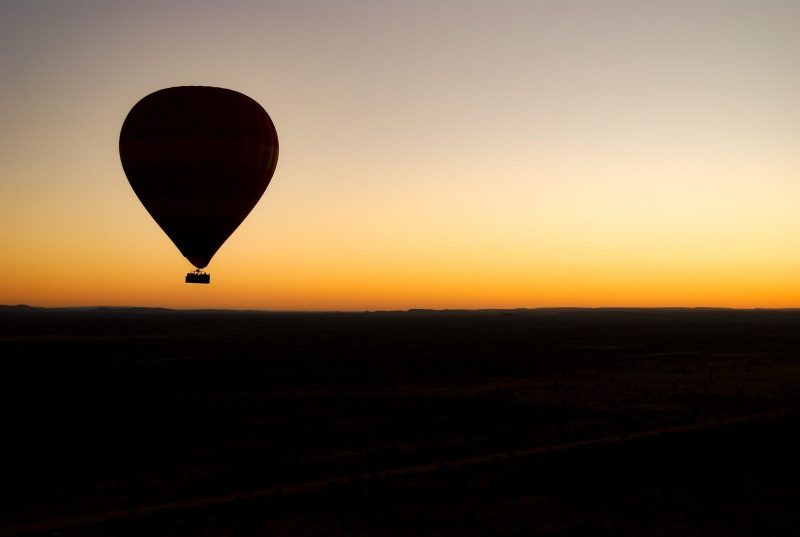Alan Eustace Breaks The Balloon Record
Not many people in the world recognize the name Alan Eustace from the ballooning industry. He was Google’s vice president of engineering and search. Before that, he worked on chip design and architecture projects. He is also a skydiver and has completed 500 jumps. Eustace exudes a mild demeanor, but beneath that is an engineer who likes challenges. Hence, his love and passion for space travel led him in 2014 to be the highest skydiver. He ascended via balloon to 136,000 feet and returned safely with a parachute and a spacesuit. It did not garner the same press attention that, Felix Baumgartner, the former record holder got because Eustace’s motives were not prestige or fame. He just wanted to sort out some engineering problems. Experienced space engineers joined his team for this mere satisfaction.
Small nagging problem
An avid pilot and skydiver, Eustace had just completed a project in 2010 showing that it is possible to free-fall from a business jet. All other balloon ventures had relied on gondolas or capsules to convey people to the stratosphere. But Eustace had the gut instinct that the journey could be made simpler. He believed that it is possible to scuba the stratosphere by carrying all that is necessary for survival in a wearable system. This problem kept nagging Eustace. So, he embarked on a trip to revolutionize high-altitude flight. Eustace came up with the idea in 2010 to make an outfit that would enable people to survey high-altitude areas of the earth’s atmosphere.
Open up stratosphere
The troposphere and the stratosphere divide the earth’s atmosphere. The troposphere is from rock bottom and upwards up to 7 miles. The stratosphere starts from where the troposphere ends up to 31 miles onward. It was this region that Alan Eustace wanted for exploration. But the stratosphere could hurt a human being because of no oxygen, freezing temperatures, and low pressure. Moreover, they also need to be shielded from the changes in air pressure and temperature, the intensity of speed and the friction of air.
Founded project StratEx
Alan Eustace contacted Paragon Development, a contractor selling life support systems for extreme conditions, to head a project to tackle the challenges. It turned out that MacCallum, who was running Paragon Development, had also been pondering the prospect, with the goal of founding a high-altitude tour operation. The two planned to develop a new system by way of a record-breaking space jump and called the project StratEx.
Funding the project
The Red Bull-sponsored team and Felix Baumgartner around the same time, as when Alan was working on project StratEx, were revving up for their record-breaking jump. Eustace was worried that the publicity that Red Bull drew would force him to cut corners. So, he chose to fund the project himself and assembled a team who swore to secrecy. The spacesuit company Dover joined him as a partner.
Team building exercise
Paragon Development, Dover and a few senior space engineers formed the Stratex team. After assembling them, Eustace and the group spent years solving the problems of stratosphere exploration and a year and a half to get ready for his historic jump. Their mission was to return human beings from the edge of space to the earth using minimal life-support systems.
Hairy problem solved

Stratex
Eustace overcame many engineering challenges to build a technology from scratch. The drogue itself presented the most significant setback, one that nearly killed Joe Kittinger in 1959. For the first part of Kittinger’s jump, the chute that was designed to deploy his drogue flapped around uninflated wrapping his neck around with it. Without the drogue, Joe went into a spin and blacked out, only surviving because his main chute automatically deployed. At times, the massive technical challenges and obstacles of the mission grew in number and size. But in the end, the StratEx solved every problem ingeniously.
Testing, testing, testing
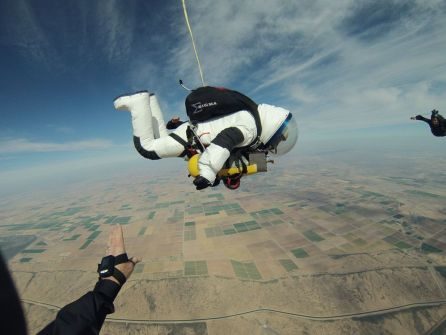
Alan Eustace Source Credit: Popular Science
During the test flight from a typical height for recreational skydiving, many things went wrong. Firstly, Eustace almost could not deploy and steer his parachute. Therefore, he could not stop spinning, which can leave jumpers unable to open the chute or cause them to lose consciousness. But he eventually survived the fall and landed miles away in the desert. Felix Baumgartner, the previous record-holder high-altitude skydiver while breaking the record in 2012 also experienced uncontrollable spinning, and it nearly killed him. After the flight, Eustace’s team added more features that would stop him from spinning. Secondly, the team had not anticipated Eustace’s limited capability of motion in the suit. As he passed through the door while exiting the plane, the suit’s GPS and communications antenna broke off. Therefore, the team could not talk to him to locate him. Fortunately, a military helicopter that was in the area spotted Eustace’s parachute from the air.
The StratEx team had done dozens of safety tests and dry runs and put in thousands of engineering hours by the time Eustace was ready to make his leap. But running all the tests do not always prepare one for the things that go wrong during the complete execution. Nevertheless, Eustace continued to exude a joyful attitude, and his dedication seemed unwavering.
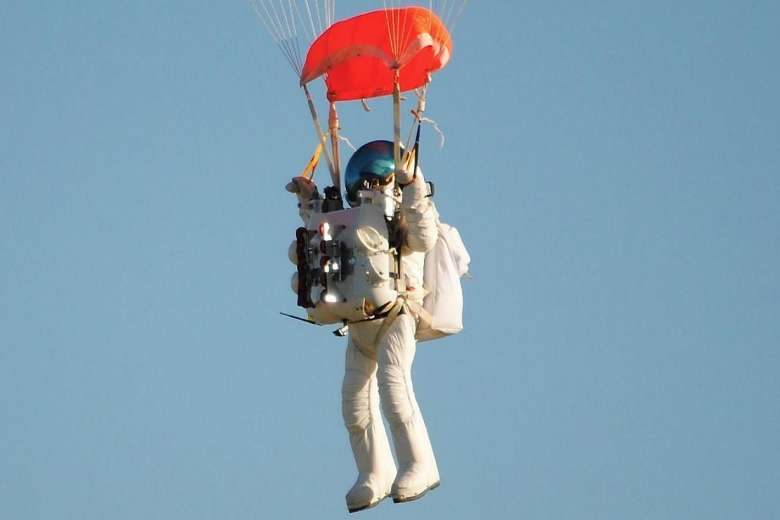
Alan Eustace Source Credit: The Straits Times
Bon space voyage
On the 24th of October 2014, the team strapped Alan Eustace to a balloon in a 500-pound spacesuit. Then he rode the balloon up and rose to an altitude of 25 miles above New Mexico, i.e., a height of 136,000 feet. Alan Eustace then leaped to earth wearing only a spacesuit after pulling a chord separating him from the balloon that sent him plummeting to the ground from the edge of the stratosphere at a speed of 821 mph. This feat shattered not only the sound barrier but also the previous high-altitude jump and skydiving records. Finally, Alan Eustace did indeed revolutionize the commercial space industry, and in the process, the door was opening to safer and cheaper near-space travel opportunity for ordinary enthusiasts.
Alan Eustace continuously engages in such endeavors that reflect his nerves of steel. A free fall from the stratosphere at a speed that can be life-threatening to a human being may not be a thing of the faint-hearted. But a leisurely wildlife balloon safari in Kenya is not only safe but also luxurious and affordable.
5 Frequently Asked Questions About Alan Eustace
To book a balloon safari, please fill out the following form or simply email us on safaris@safari-center.com

